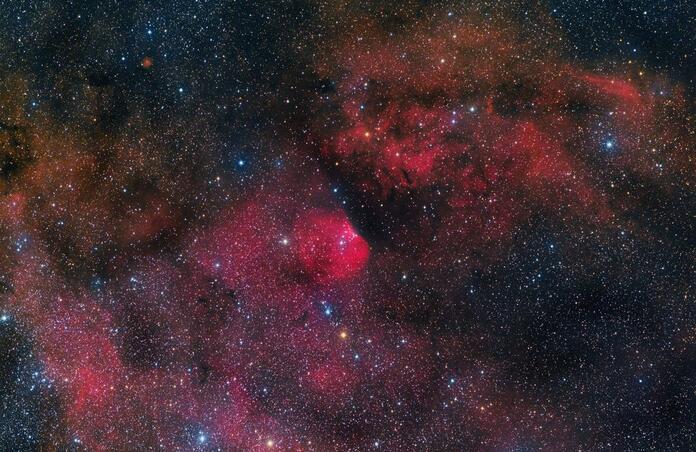Improving Undersampled Images with Drizzle

Telescope Live has quite a bit of data from SPA-1, SPA-3,. and AUS-2. They are all Takahashi FSQ 106 setups that have been reduced to 380mm focal length, I imagine using the matched Takahashi .73 reducer for that scope. They also all have the FLI PL16083 on them. Seeing averages between 1.5 and 2.5 according to Telescope Live. According to the sampling calculator at astronomy.tools this means these are undersampled, which can lead to a loss of detail, but is also great for hiding any guiding issues from chasing seeing. Since these are wide angle most people aren't going to notice any kind of softness unless they zoom in at 100%, and who does that? Mainly pixel peepers.
Since you may run into pixel peepers at times how about a way to gain some of that resolution back? What if I told you that scientists at NASA did exactly that to extract more detail from the Hubble images. That is how drizzle integration came about.
Now you really need 3 things to take advantage of drizzle integration. 1, the data must be undersampled. 2, the data must be drizzled (with multiple One Click Observations this happens my accident, but you can also add it with an Advanced Request). 3, there needs to be plenty of good quality data to offset the noise added by using drizzle, and Telescope Live has you covered on this last one! This gives a great explanation of Drizzle here: https://www.stsci.edu/~fruchter/dither/drizzle.html
What it does in layman's terms is to increase sharpness and resolution at the expense of increasing noise. Also, it will not add sharpness to a well sampled image, but will increase noise so you don't want to do it on oversampled or well sampled images. Still, when used properly it will make a very visible difference to your images, and if you decide to reduce your image back to what the original size is and use the proper algorithms when reducing it you will get a result you will be pleased with.
Since I use Photoshop for my final tweaking I will use the image resizer in it and either allow it to do an automatic selection or will use the bicubic sharper or bicubic after placing the preview over a spot that has detail I want to preserve, but whatever way you use you should have a good result, and of course you can always leave it at your drizzled size.
Speaking of an object I used this on, here is an Advanced Request for Sh2-140 I did that finished last night on SPA-1. It is 6x 600s each of Ha, red, green, and blue for a total of an hour on each channel or total of 4 hours integration. I stacked it in APP using drizzle integration at 2.0. I did some initial processing in APP, then saved it as a 16 bit tif and finished things up in Photoshop. One thing I did in APP was to have all channels at 100% on their matching color with Ha at 100% red. I left the RGB channels at 1.000 weighting and set Ha at 2.500 weighting since that brought out all those nice Ha clouds. Here is the result of that.
I have also posted it on Astrobin and put it in the gallery at Telescope Live, which is an excellent place to also load your images and is preferred as a place for them. It can also set you up to possibly get the Telescope Live Image of the Week! https://telescope.live/gallery
This blog post was originally published in our Telescope Live Community.
The Community represents Telescope Live's virtual living room, where people exchange ideas and questions around astrophotography and astronomy.
Join the conversation now to find out more about astrophotography and to improve your observation and post-processing skills!
